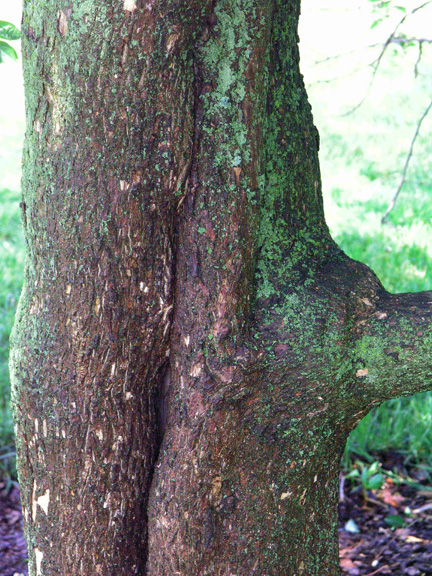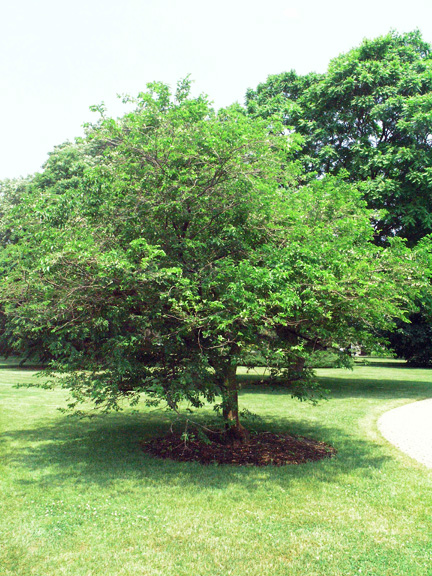| General Description | A deciduous flowering tree with a single stem. It is an accent plant. A low branched tree with a somewhat rounded crown.
|
| ID Characteristic | Pendulous flowers below the foliage, smooth gray bark, naked buds, horizontal branching on older trees.
|
| Shape | A low branched tree that develops a broad-rounded crown, branching is horizontal; single trunked. |
| Propagation | Seeds exhibit a double dormancy and warm stratification for 5 months followed by cold for 3 months is recommended. Seeds could be autumn sown and germination will take place the second spring. If collected fresh and sown immediately they may come up the next spring. Softwood cuttings, treated with IBA will root. Styrax japonicus is extremely easy to root from softwood cuttings, about 1000 to 3000 ppm IBA quick dip, peat: perlite, mist proved optimum. The rooted cuttings are not easy to overwinter.
|
| Cultivation | Full sun to partial shade, needs a moist, well drained, acidic soil, avoid difficult sites.
|
| Pests | Lack of cold hardiness can be a problem in the colder parts of its useful range. Bark splitting and ambrosia beetle can be problems. It is a delicate plant that can thrive for several years and die abruptly.
|
| Notable Specimens | The Niagara Parks Botanical Gardens, Niagara Falls, Ontario. |
| Habitat | Native to China, Japan and Korea. |
| Bark/Stem Description | Bark is gray brown with smooth consistency but showing irregular, orangeish brown, and interlacing fissured and an excellent addition to the winter landscape.
|
| Flower/Leaf Bud Description | Small, sessile, naked, scurfy, superposed, 5 mm long
|
| Leaf Description | Simple leaves in an alternate arrangement, ovate to elliptic, acute to acuminate, 2.5-8 cm long and 1-3.5 cm wide. Medium to dark green and often lustrous above, glabrous, with auxiliary tufts below.
|
| Flower Description | Flowers May/June. White blooms hang below the foliage and are 5-lobed with yellow stamens. They are slightly fragrant, bell shaped, corolla 5 lobed being united near base, 2cm wide. |
| Fruit Description | Dry rounded drupes, ovoid, about 1 cm long, grayish in colour, and somewhat attractive, ripe in August and often falling by November, containing a single shiny brown hard seed.
|
| Colour Description | Summer colour is dark lustrous green. Autumn colour is yellow, often with a reddish cast, can be reasonably showy, but colours up late. Autumn foliage is often frozen before full colour develops. |
| Texture Description | Medium-fine
|
.jpg)
.jpg)
.jpg)

